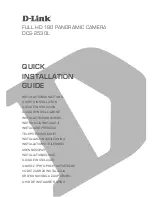
Camera interfaces
151
Goldeye G/CL Technical Manual V4.1.1
The length of this gap is controlled by the
ClMinFValToLValDelay
parameter
and is given in camera clock cycles.
The effective length of this gap is equal to either the value of
ClMinFValToLValDelay
, or (3 *
Width
+ 32) clock cycles,
whatever is the larger.
3. The LVAL signal is set to
high
and indicates the start of a new line transfer.
4. The LVAL signal switches back to
low
and indicates transfer of the line is
complete.
5. A gap occurs between two line transfers.
The length of this gap is controlled by the
ClLValToLValDelay
parameter and
is given in clock cycles.
6. The LVAL signal is set to
high
and indicates the start of a new line transfer.
7. The LVAL signal switches back to
low
and indicates transfer of the line is
complete.
If this was not the last line, go to #5.
If this was the last line, go to #8.
8. A gap occurs after the last line transfer within a frame.
The length of this gap is controlled by the
ClLValToFVal
parameter and is
given in clock cycles.
9. FVAL switches back to
low
and indicates the transfer of the frame is complete.
10. A gap occurs between two frame transfers.
The Length of this gap is controlled by the
ClMinFValToFVal
parameter and is
given in clock cycles.
Note that this is the minimum delay that must be kept between two frames.
Go to #1.
The gaps between the FVAL and the LVAL signals can be adjusted as displayed in
Figure 46 . The lengths of the gaps can be adjusted using the features listed in
Table 104 .
If the value of the
ClLValToLValDelay
parameter is set too small, the camera
may not be able to provide the data fast enough. If this happens, the camera
automatically extends the gap. This may result in line gaps of unequal lengths.
Figure 46: Gaps usable for Goldeye CL timing control
FVAL
LVAL
C
A
B
D
A
















































